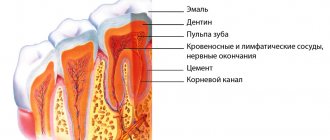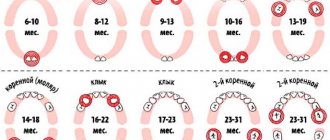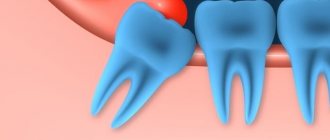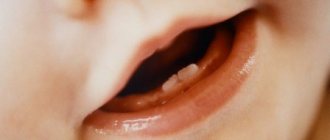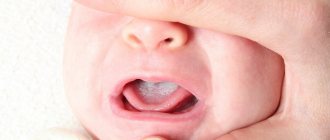Causes of the smell of acetone from the mouth of a child
Acetone syndrome is a condition of the body characterized by the presence of excessive amounts of ketone bodies in the blood.
This syndrome can be either a separate disease or occur in various diseases. The main signs of acetone syndrome include nausea, vomiting, lack of appetite and cramping abdominal pain. The syndrome most often occurs before the age of 12, with girls suffering from the disease much more often. Read on to learn how to treat increased acetone in children.
Pediatricians distinguish between idiopathic (primary) syndrome, which is an independent disease, and secondary, which accompanies the underlying disease. The latter include diabetes mellitus (most often a decompensated form), hemolytic anemia, thyrotoxicosis, traumatic brain injury, toxic liver damage and others. The course of secondary acetone syndrome and its prognosis largely depend on the course of the underlying disease.
Causes of acetone odor from a child’s mouth:
- lack of carbohydrates in the diet;
- disturbance of acid and water-electrolyte balance in the body;
- abuse of fatty and protein foods;
- strict diet or prolonged fasting;
- excessive physical activity;
- depletion of pancreatic reserves.
Poor diet is a common cause of halitosis
Sometimes parents associate the occurrence of bad breath with the fact that the baby may have eaten something too odorous or stale.
Indeed, some foods can leave a not entirely pleasant smell for a long time - garlic, radishes or radishes, onions, cabbage, corn. Drinking certain juices and carbonated drinks also contributes to this. But the smell should not be very persistent - ventilation of the organs and natural cleansing of the oral cavity should quickly cope with it.
Often such a sign can occur after an excessive feast, when the baby at the festive table simply ate too much. The digestive system, in its normal mode, cannot process excess food, so it stagnates in the stomach - this is where unpleasant belching with a putrid unpleasant odor occurs. This also happens in children who are prone to overeating and obesity - for them this symptom can often be chronic. If the diet shifts towards protein foods, this stimulates constant rotting processes.
Correct introduction of the first complementary foods during breastfeeding will help avoid the appearance of excess weight in children. Very often this problem occurs among sweet lovers. Waste products released by colonies of microorganisms can cause an unpleasant odor.
Symptoms of the disease
This condition is characterized by the appearance of frequent acetonemic crises, the first of which occur at the age of two to three years. Symptoms of an acetone crisis include:
- repeated vomiting, diarrhea, temperature rises to 38°C;
- smell of acetone from the mouth;
- lack of appetite;
- primary excitement followed by drowsiness and apathy;
- arrhythmia, pale skin, unhealthy blush;
- cramping abdominal pain;
- intoxication and dehydration (dehydration).
Let us remind you that it is extremely important for parents to know what to do in case of acetonemic vomiting in a child.
Prevention
Teach your baby to practice good hygiene from an early age. Do not forget about regular visits to the dentist, it is better if they are joint.
In childhood, the diet should not contain unnecessary excesses; it must be correct. It is better if you ask a nutritionist all questions related to this.
Be sure to create and maintain a favorable psychological environment; you will assist your child in solving his problems, even if in your opinion they seem ridiculous.
If bad breath occurs for no apparent reason, do not wait for anything, but consult a doctor immediately. Maybe he can just dispel all parental fears and give the necessary advice.
Diagnosis of the syndrome
To make a correct diagnosis, anamnesis data, patient complaints, clinical manifestations and the results of additional examination are important.
Laboratory tests include a biochemical blood test and a general urine test. Please note that the amount of acetone in children who do not suffer from this disease does not exceed 0.01 grams.
Instrumental diagnostics is echocardioscopy, with which you can see indicators of central hemodynamics. Acetone syndrome is characterized by a decrease in the diastolic volume of the left ventricle and a decrease in venous pressure. Against this background, the cardiac index is increased due to tachycardia.
Recently, you can even test your urine for acetone at home. For this purpose, special indicator test strips are used.
On our website you can familiarize yourself with the qualifications of specialists advising on this issue and learn how to check the level of acetone in children.
Grodno Regional Children's Clinical Hospital
Details Published September 22, 2021
Rotavirus infection in children
According to WHO, every person (regardless of immunity status, gender and race) has had rotavirus infection. And those who have just been born will still have to get sick from rotavirus.
What is rotavirus infection, why is it dangerous and how to identify it? We will try to answer these and other questions in our article.
So, rotavirus infection is one of the acute intestinal infections caused by pathogens from the rotavirus family. Sometimes people call this disease “intestinal flu,” which is fundamentally wrong, since influenza viruses can exist and multiply only on the mucous membranes of the respiratory tract. But rotavirus “lives” in the small intestine and has nothing to do with damage to the respiratory tract.
Most often, this infection occurs in childhood and during the cold season. The virus is transmitted by contact - fecal-oral. You can become infected from a sick person through toys, dishes, door handles, household items, through water and food. The virus is very contagious!!!
After illness, a strong immunity to rotavirus is developed, but, unfortunately, it has almost no significance, since this virus has many varieties. Those. a person can become infected again.
After infection, the virus “lives” and multiplies in the human body asymptomatically for 3-7 days (incubation period). The disease itself takes about 2-3 days, sometimes up to 7—the acute period. The recovery period continues for at least another 5 days after the symptoms disappear.
A child is contagious ALL THE TIME from the moment of infection until the end of the recovery period!!!
The likelihood of infection does not depend in any way on the cleanliness of the child’s family. Children aged 6 months to 2 years are most often affected. In general, children from birth to 5 years of age are at risk.
The main symptoms of rotavirus infection are:
– watery diarrhea (diarrhea) without signs of blood;
- vomit;
– a sharp increase in temperature to high numbers (39 and above);
– pain in the abdomen;
- lack of appetite;
- loss of strength, weakness.
Diarrhea is the main symptom of rotavirus infection. As a rule, it lasts no more than 2 days, but is dangerous due to dehydration.
Dehydration is always a risk of damage to the nervous system, especially in children under 2 years of age. Body temperature may rise sharply, causing convulsions and then respiratory arrest. In addition, a lack of fluid in the body impairs the functioning of the lungs, which can lead to inflammation.
A typical picture: a child with dehydration ends up in the hospital, and 2 days later pneumonia is also discovered. His parents think that he became infected in the hospital, but in fact, lung problems are a common complication of any intestinal infection.
How can parents determine whether diarrhea is caused by a viral infection or food poisoning?
Food poisoning is caused by bacteria and diarrhea most often has a pasty consistency. Diarrhea with water, sour smell of feces - viral diarrhea.
The main thing that parents must learn to do is to quickly assess whether the child has signs of dehydration, since it is dehydration that poses a danger to life and health.
In all cases of diarrhea and/or vomiting in a small child, you should consult a doctor!
What symptoms should parents be alert to regarding dehydration?
If a baby's tongue becomes dry, he begins to cry without tears, does not urinate for more than 6 hours and practically does not sweat - this is a good reason to call an ambulance.
If the baby begins to lose consciousness, the eyes are “sunken,” the facial features are “sharpened,” and the body temperature is high—the help of doctors is required immediately.
If a child begins to become dehydrated and cannot or does not want to drink, then it is necessary to introduce fluid into the body intravenously. This is what inpatient treatment is based on.
If there are no signs of dehydration, then parents can easily cope with rotavirus infection at home.
So, what do you need and can do yourself?
The main principle of treating rotavirus infection is to prevent dehydration. To do this, the child must drink and drink a lot. The more often the better. You can drink in small portions, if it is difficult to drink in sips, from a teaspoon, from a syringe without a needle, but often.
The drink should be at room temperature, neither cold nor hot.
For drinking, it is better to use a saline solution, which is sold in a pharmacy, for example “Regidron” or similar ones. You can alternate the saline solution with regular boiled water. If your child urinates every 3 hours, it means he is consuming enough fluid.
If you can’t get something to drink even from a syringe or the child doesn’t drink enough, be sure to call an ambulance!
If, in addition to diarrhea, the child has vomiting, then the baby should be placed on his side so that he does not choke on the vomit.
Give antipyretics at a temperature of 38.5 and above (if there are no other indications).
Do not feed, especially by force! If your child asks to eat, you can give him some liquid porridge with WATER!
The diet should be followed not only during the acute phase of the disease, but also during the recovery process. Whole milk and dairy products, sweet fruits, baked goods, sweets, meat, fatty and fried foods are completely excluded from the diet. YOU CAN: water porridge, vegetable soups, white bread croutons, oven-baked apples. Feed frequently, but in small portions.
Very young children are not given a diet, breast milk is not limited, but they make sure that they drink plenty of fluids. Sometimes, due to an enzyme deficiency, infants may develop intolerance or partial intolerance to breast milk. In this case, reduce the frequency of breastfeeding and temporarily add lactose-free infant formula (until the child recovers completely).
You cannot take antibiotics on your own, since the disease is viral in nature, and antibiotics do not work on viruses.
As for antiviral drugs, unfortunately, at the moment there are no antiviral drugs with proven effectiveness against rotavirus.
Do not take antidiarrheal drugs! During rotavirus infection, microparticles of the virus are released in the stool. Therefore, stopping diarrhea means prolonging the disease, since virus particles will remain in the small intestine and continue to destroy beneficial cells.
Bed rest is not necessary if the child feels well enough. After the symptoms disappear, you can go for a walk, but avoid public places and contact with other children (playgrounds, playrooms, etc.).
A child can be sent to a kindergarten or school only after a recovery period, i.e. 5-7 days after the cessation of diarrhea and vomiting.
Doctor - pediatric neurologist KFD Glybokaya O.L.
Therapeutic measures
At the first signs of the syndrome in question, the child should be reassured and given glucose. The use of a sorbent is also extremely important - it can be enterosgel or even activated carbon. To avoid dehydration, drinking plenty of fluids (mineral water) is recommended. It should be given one tablespoon at a time, but often. The use of antispasmodics is justified.
If vomiting does not stop within an hour, you must call an ambulance, which will provide qualified first aid for acetone in children.
In case of secondary acetone syndrome, treatment of the underlying disease is important.
Prevention of infection in the baby's body
First of all, a preventive measure is considered to be the correct lifestyle of a newborn. Practice hardening and water procedures, do not wrap or overcool the child.
It is necessary to regularly perform gymnastics for newborns, massage and often walk outside. The baby should have a full and sound sleep; to do this, eliminate all possible irritants.
Watch your diet, it should be balanced. Do not limit your consumption of vegetables and fruits as complementary foods. You should not refuse preventive vaccinations that prevent the development of various infectious and bacterial diseases.
We recommend watching the video for the material.
Diet with acetone in children
One of the main causes of acetone syndrome is poor nutrition. To avoid relapses, we advise parents to strictly monitor the baby’s daily diet. Carbonated drinks, chips, sweets with preservatives are strictly prohibited. Also, do not give your child fried or too fatty foods. The diet should be dominated by porridge and vegetable soups. Meat and herbs are added in small quantities. Following a diet with acetone in children is of great importance. As a rule, doctors recommend sticking to it for two to three weeks after a crisis of acetone syndrome.
What not to eat with acetonomia
To prevent a deterioration in the general condition and not provoke a re-increase in acetone levels, the following should be excluded from the diet:
- Fatty broths made from bones or meat (including poultry or fish)
- Fatty meats
- By-products (liver, kidneys, etc.)
- Smoking
- Crayfish and some types of fish
- Fat cottage cheese and sour cream
- Some types of vegetables
To receive detailed advice on nutrition and create a balanced diet for a child with acetonemia, sign up for a consultation with our experienced pediatricians.
Need some advice?
Sign up
Callback form
Application has been sent, we will contact you soon
How to reduce acetone in a child: tips for parents
As noted above, at the first signs of an emerging crisis, it is important to give glucose preparations and cleanse the intestines. For this purpose, you can do an enema with a soda solution, give a sorbent and give the baby small portions of water. Your local pediatrician will tell you in more detail how to reduce acetone in a child.
A list of easy-to-follow recommendations that will help prevent relapse:
- normalization of the daily routine;
- eliminating excessive loads;
- limiting time for watching television programs and computer games;
- proper nutrition excluding processed foods, fast food and quick snacks;
- walks in the air and moderately active games;
- adequate day and night sleep.
In addition, parents should know the dangers of increasing acetone in children and what its consequences are.
Principles of treatment
A person who has encountered an acetone crisis in a child knows that it is better to prevent all possible pathology developments than to deal with it later. But not every parent knows about this disease, which is why cases of prolonged acetonemic crisis occur. How to get rid of the disease, overcome ketonuria and prevent the development of acetonemic syndrome?
Drug treatment
If the disease was detected at a very early stage, it is enough to inject a certain amount of insulin into the patient (as determined by the doctor), follow a diet, drink enough fluids, and undergo regular tests to monitor the progress of treatment.
But often drug treatment helps seriously ill patients, as it is carried out in the hospital. The full course of medication treatment includes:
- A course of insulin that helps lower sugar while at the same time raising blood glucose to normal levels.
- Ketonuria, progressing to acidosis, causes severe dehydration. To compensate for the lost amount of body fluid, the patient is given an infusion of saline through an IV.
- Electrolyte solutions help restore water-salt balance.
- Antibiotics and anticoagulants are mandatory in the treatment of ketonuria. Antibiotics prevent the occurrence of inflammatory processes and fight those that have already flared up. Anticoagulants normalize the level of blood density and make it more viscous.
- Glucose solution is taken in cases where it is urgently necessary to normalize sugar levels.
Doctors often prescribe drugs like smecta when cleansing the body in order to remove ketone bodies that are dangerous to the body as quickly as possible. In some cases, during the course of treatment, painkillers and drugs that stop vomiting are prescribed.
It is worth noting that treatment of ketonuria occurs quite quickly if you consult a doctor on time and deal with the pathology in accordance with his requirements.
Treatment with folk remedies
Folk remedies include methods for treating ketonuria at home.
- A sodium bicarbonate solution will help flush out the intestines.
- Sweet tea with lemon to normalize blood sugar, blood glucose levels.
Important! In the case of ketonuria, folk remedies are only pre-medical care. The pathology is quite serious and it is unlikely that anyone will want to experiment with their health or the health of their child. Seeing a doctor is mandatory.
Diet to reduce acetone concentration
Medicines are good, but without what you definitely won’t be able to cure ketonuria, it’s without a properly structured diet. In fact, a sick person needs to adhere to all the rules of a healthy diet.
- Vegetables from the garden - garlic, cabbage, onions, carrots and cucumbers in various dishes and variations. Fiber-rich foods are especially valued.
- Fruits are also useful for acetonemia - peaches, apricots, apples, grapes and pears.
- Turkey or rabbit meat, processed sea fish - that is, meatballs, cutlets or meatballs.
- Cereals: rice, oatmeal and buckwheat.
- Crackers.
- Marmalade, natural jelly and caramel.
- Low-fat dairy products: milk, cottage cheese, feta cheese, kefir and fermented baked milk.
- Compotes, berries in the form of cherries and cherries.
All of the above foods can and should be eaten with acetonemia. So, there are foods rich in vitamins, rich in fast carbohydrates and glucose. A diet is necessary to prevent an acetone crisis or to cure it.
There are some things you can eat, but in moderation:
- Homemade and store-bought preserves.
- Herring, seafood, sushi.
- Cauliflower, legumes and tomatoes.
- Pasta.
- Biscuits, cupcakes.
- Sour cream and cheeses.
- Bananas, kiwi.
You should not eat the following foods at all:
- Fatty foods.
- Chicken, veal.
- Smoked and pickled products.
- Mushrooms and eggplants are hard on the liver.
- Sorrel and spinach.
- Strong black tea, coffee - because of caffeine.
- Drinks with alcohol, gas.
- Fruits with a sour taste.
- Fatty fermented milk products.
- Chips, crackers.
- Floury.
- Adjika and ketchup, mayonnaise.
Forecast
If treatment is started on time, the prognosis for this condition is favorable. Timely consultation with a specialist, high-quality diagnosis and effective therapy will help avoid many serious complications. To a greater extent, this statement concerns the first (idiopathic) syndrome.
If you have any questions regarding acetone syndrome in children or need help from a specialist, we are always happy to help. The medical center is equipped with modern equipment. The appointments are conducted by doctors with many years of experience. The specialist will carry out diagnostics, tell you about the first symptoms of increased acetone in the child’s urine and about methods of prevention. Contact us - we can help you 24 hours a day.
Related services: Pediatrician consultation
Risk group
Children aged 1 to 7 years are most susceptible to acetonemia. If you have smelled acetone from your child at least once in your life, this may happen again in the future. As a rule, in the vast majority of cases this goes away after 7 years. If there are problems with acetone after 7, a medical examination is necessary.
In rare cases, acetone can be a symptom of diabetes if not treated correctly.
There is no specific risk group for children, except for the age category, it all depends on the physiological characteristics of each organism. One child may have a high content of acetone, but it is quickly excreted in the urine and does not have time to accumulate in critical concentrations. For another child, the moment from the onset of the smell to vomiting may be very short, which is dangerous.
Return to content


